This 2020 presidential election campaign is my thirteenth. I’ve covered them all since 1968, except for 1972 when I was in Vietnam photographing the war. (I have the best excuses.) Due to Covid-19, this year I only caught the early action in February, during the New Hampshire Primary. Thankfully it produced some telling images.
Campaigning for president is as American as apple pie, and photography has been a part of that process almost since it was invented. Abraham Lincoln was the first presidential candidate who really understood the power of photography, and said that Matthew Brady’s portrait of him, combined with his Cooper Union speech, made him president. The portrait, reproduced through woodcuts and engravings, was disseminated throughout the country, even though it would be another 20 years before the first photograph was published in 1880.
According to historic material about Lincoln in the Roosevelt House archive, one of his supporters noted, “I am coming to believe that likenesses broad cast, are excellent means of electioneering.” And an opponent complained, “the country is flooded with pictures of Lincoln, in all conceivable shapes and sizes, and cheap.”
Politicians like to stand above everyone else, and Teddy Roosevelt was one of them. A picture of him standing on a table talking to a crowd is a good example of that. He understood spin, and used publicity – often in the form of photographs -- to further his goals. Henry Stoddard, a journalist at the time said, “It’s true that TR liked the centre of the stage—loved in fact, but when he sought it he always had something to say or to do that made the stage the appropriate place for him.” Roosevelt’s legend, built on his championing the plight of the common man and his informal style, were re-enforced by photos of him at center stage.
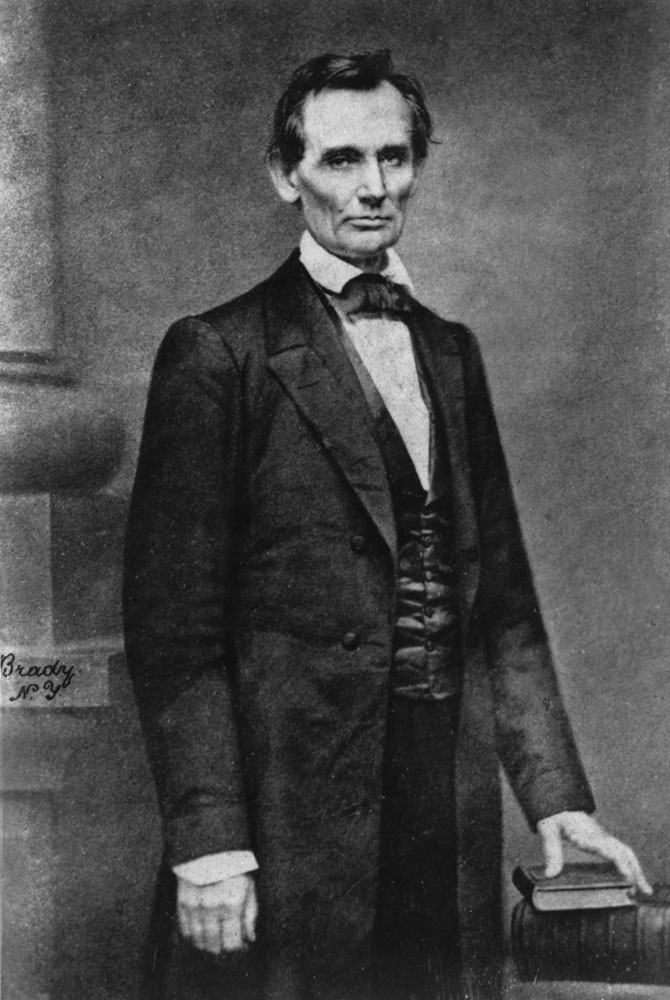
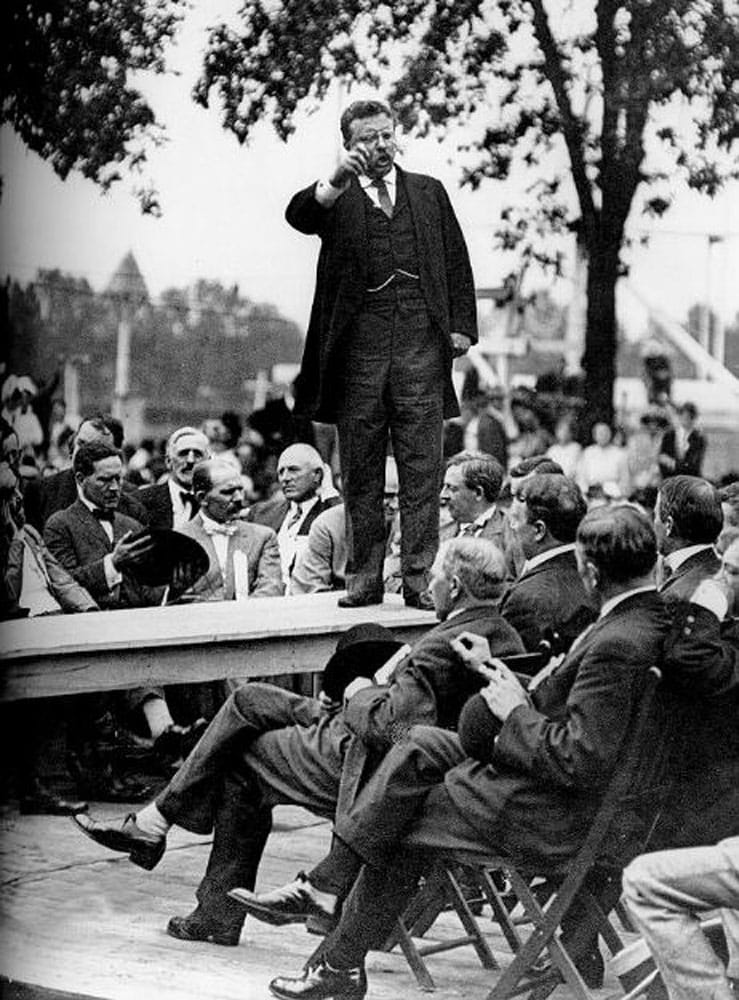
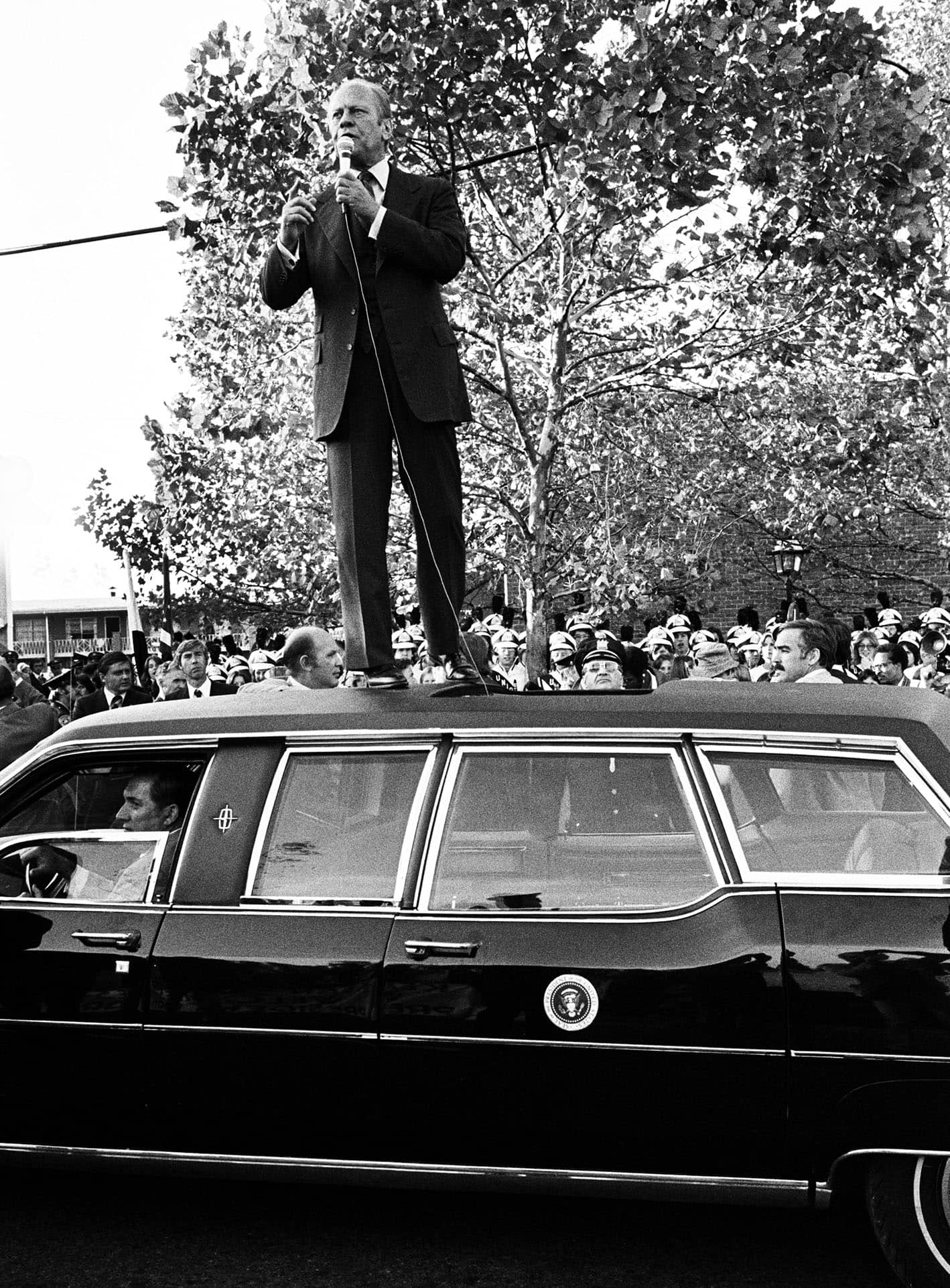
1968 By the time I came along, photography and campaigning for president went hand in hand. My first real presidential election-year photos were taken that year of Robert F. Kennedy as he ran for president. I was a 21-year-old wire service photographer assigned by UPI to cover him on a campaign trip through New Mexico and Arizona, and then in Los Angeles. My pictures of him in the predominately Black neighborhood of Watts in L.A. were very revealing about the kind of man that he was. Watts was the scene of major and lethal rioting in 1965, much of the area had been burned down, and 34 people were killed. That did not stop Kennedy from campaigning there, something that I thought was pretty brave for a white politician.
I was on the scene that horrible night at the Ambassador Hotel when he was gunned down. My last photo of him alive was when he raised his hand and made the “V” sign. Moments later, after he left the stage, he was shot. Two of my friends, Ron Bennett of UPI, and Bill Eppridge of LIFE documented the aftermath and made some incredibly dramatic photos. Those now historic pictures tell the story better than any words could.
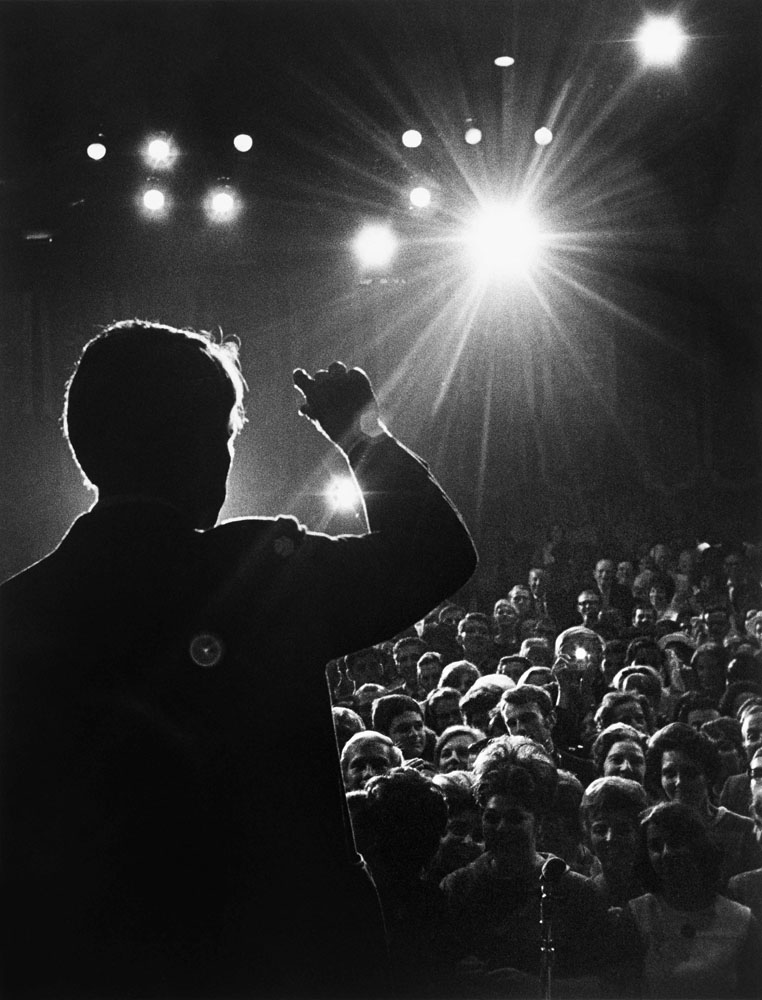
Although I photographed Lyndon Johnson once after he left office, the first President I covered extensively was Richard Nixon. My first photos of him were right after he won the Republican nomination in Miami in 1968. He came out to California and was in Mission Bay in San Diego to plot campaign strategy. One of my photos caught a light moment between him and his running mate Spiro Agnew who would later resign as vice president. Nixon would go on to beat Vice President Hubert Humphrey and third party candidate George Wallace that year. It was fairly close in the Electoral College with 301 to Nixon, 191 for Humphrey, and 49 for Wallace.
1972 In Vietnam I followed the news from afar as Richard Nixon won re-election, beating Sen. George McGovern by 18 million votes, winning 49 states, (Massachusetts went for McGovern), and capturing 520 to 17 electoral votes. Apparently, I didn’t miss much drama.
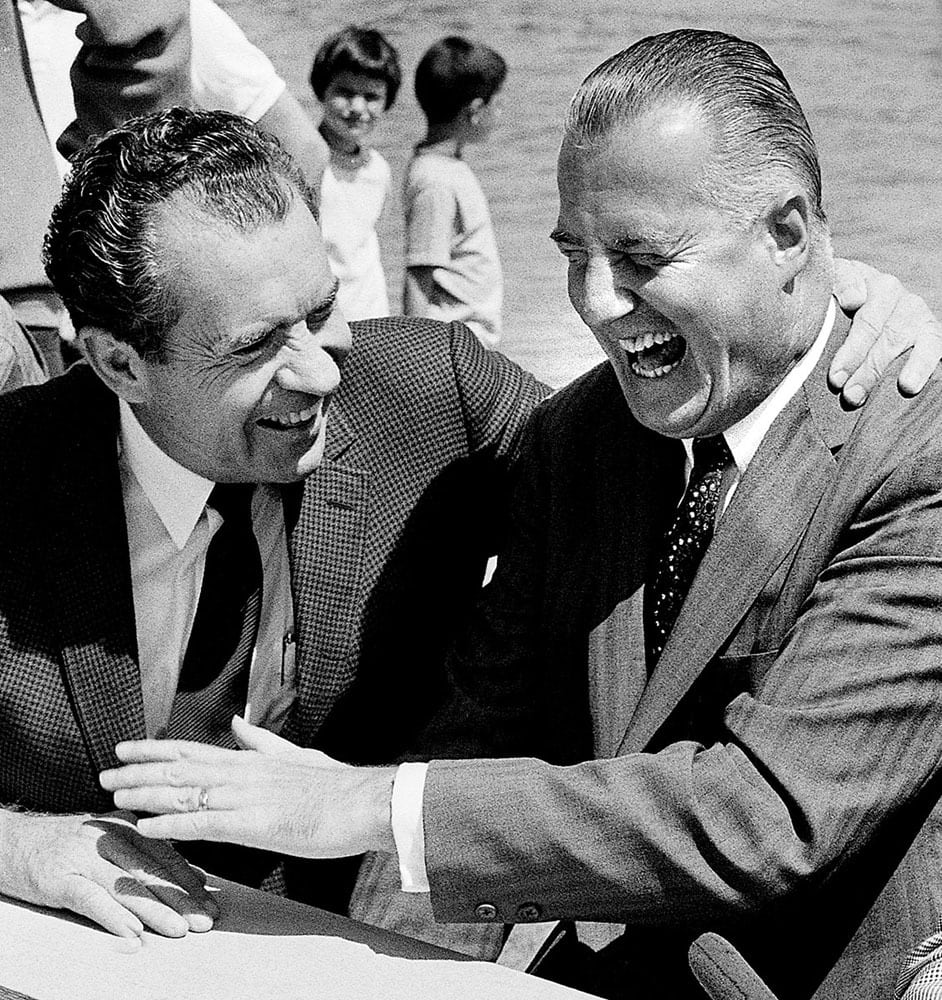
1976 The real excitement began when I got back from Southeast Asia. I was there to see President Nixon wave goodbye on the South Lawn of the White House after he resigned on August 9, 1974, and the next day I became President Gerald Ford’s chief White House photographer. In that position I got the opportunity to see a White House and an election from the inside. Ford campaigned heavily against Georgia Governor Jimmy Carter in the last two weeks before the election, had two debates with him, and came very close to beating him. But Ford’s pardon of Nixon a month into his presidency had tanked him in the polls, putting him way behind at the outset of the election, and he just never caught up. The final tally was 297-240 in the Electoral College, and in the no consolation category, Ford won the majority of states 27-23. I personally felt bad about Ford’s loss because I thought he deserved it, and would have done a great job with a full four year term.
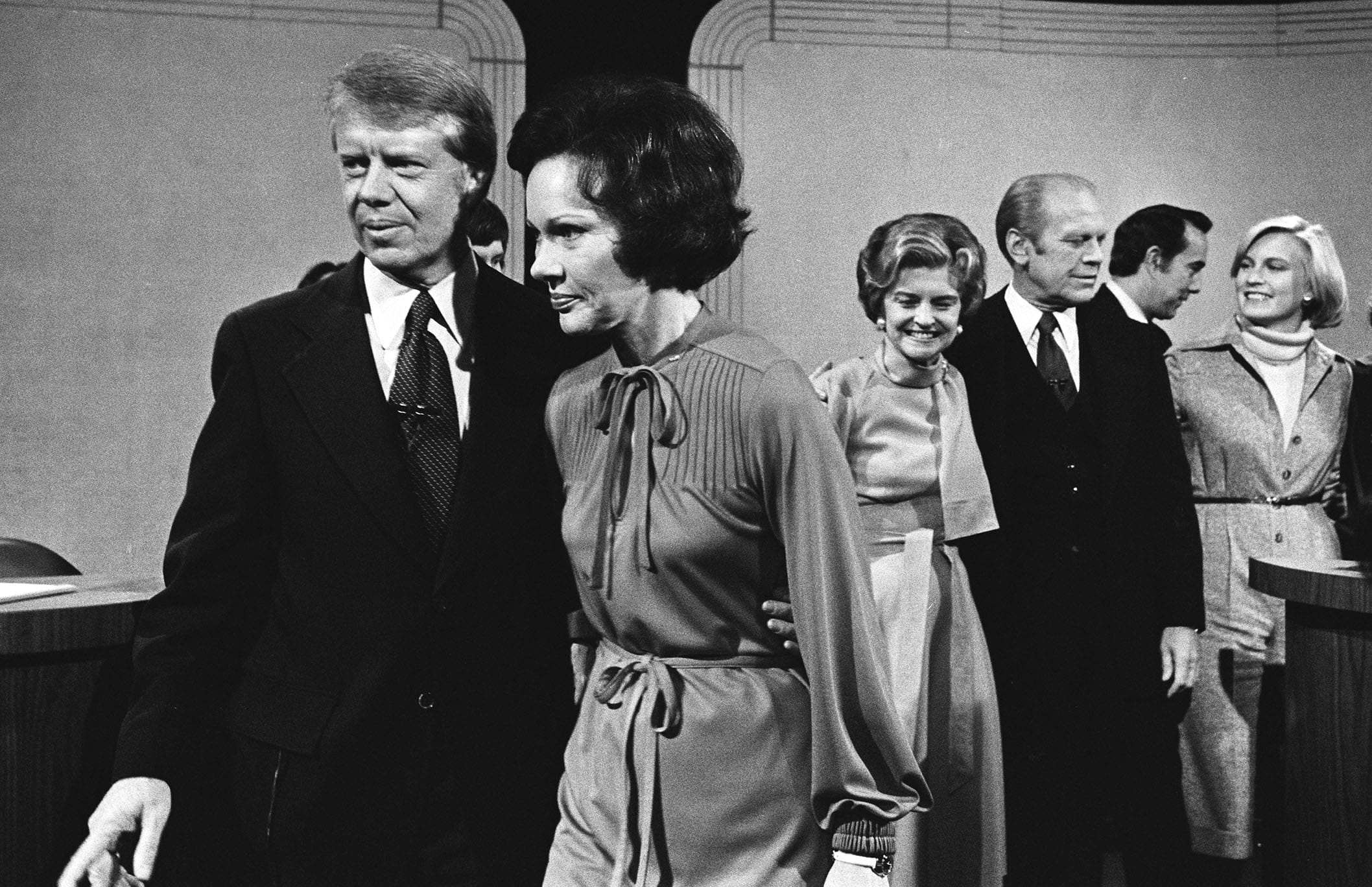
1980 This election pitted President Jimmy Carter against former California Governor Ronald Reagan. The popular Reagan had come close to beating President Ford in the 1976 primaries, but was edged out in a squeaker at the Republican Convention. I was back working for TIME Magazine, and they assigned me to photograph the Quixote-like independent campaign of John Anderson. In June he was polling at 25%, his high point, and he ended up only getting 6.6% of the final vote. Reagan beat the incumbent president in a landslide 472-59 in the Electoral College, and by 17% overall. It was the worst loss for an incumbent president since FDR shellacked Hoover in 1932.
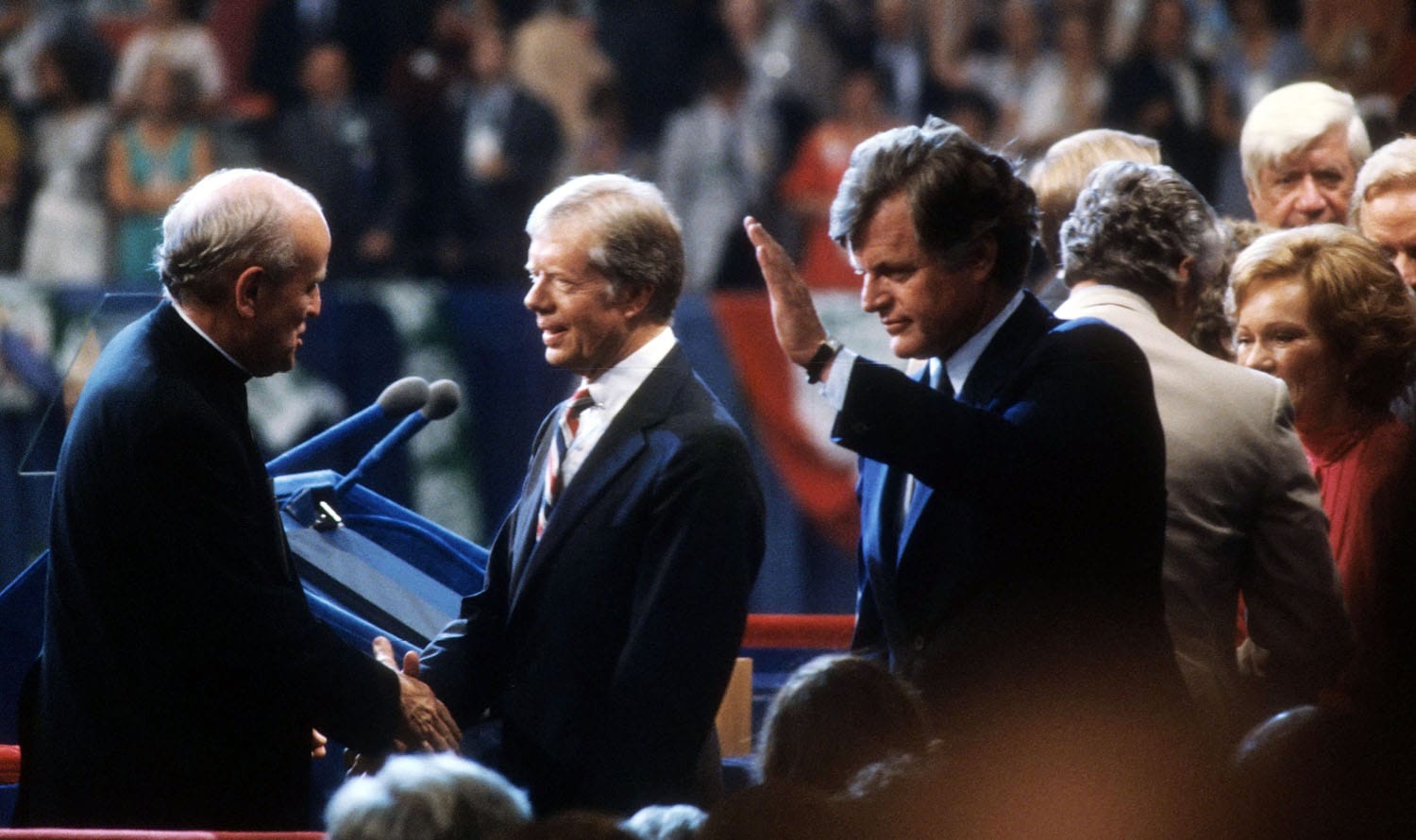
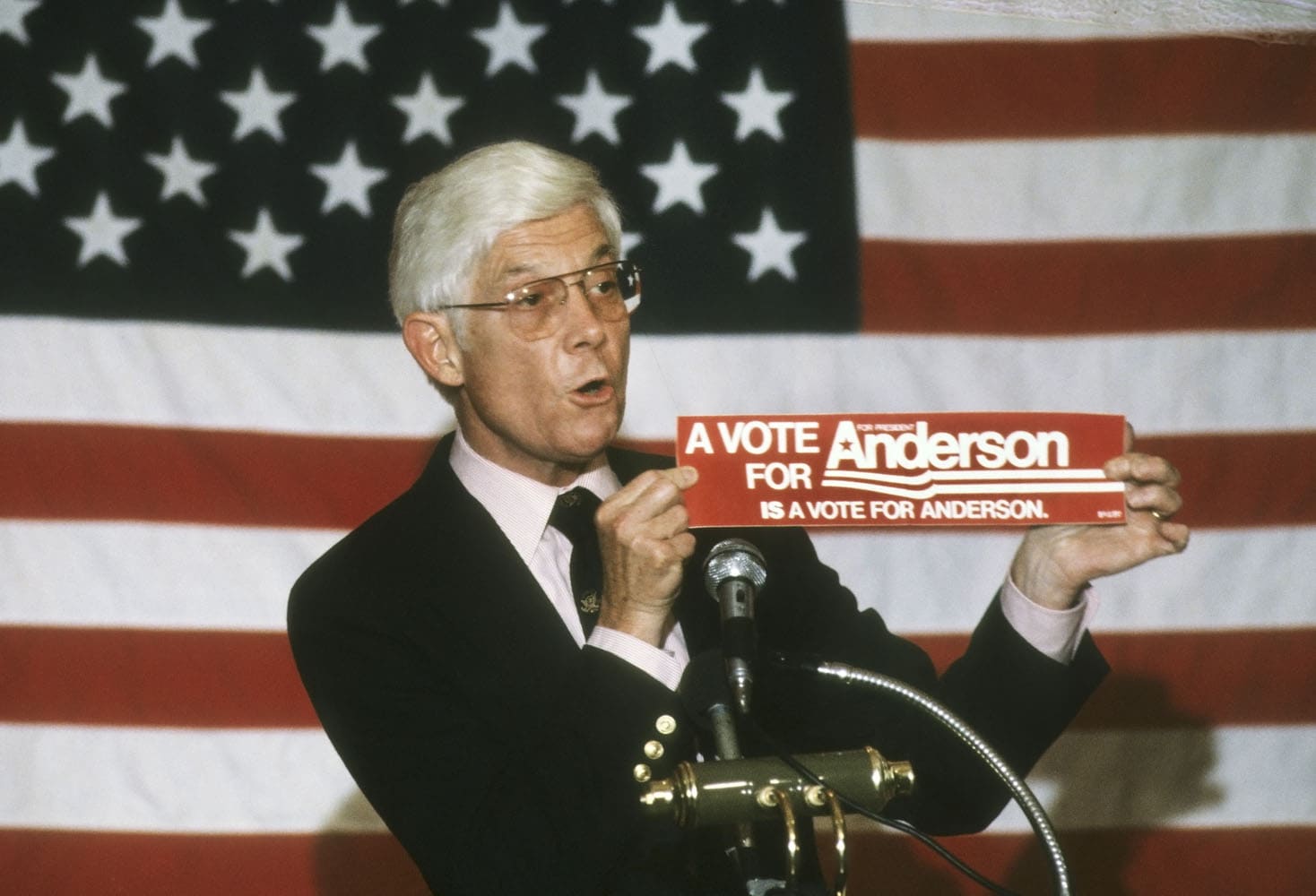
1984 President Reagan beat former VP Walter Mondale in another landslide, winning 525 of the 538 electoral votes, the most of any presidential candidate in history. Mondale only carried his home state of Minnesota. I was at the Century Plaza Hotel in Los Angeles when the crowd chanted “Four more years!” Reagan smiled and said, “I think that’s just been arranged.”

1988 An election year where a photo a photo of a candidate doing something made the difference. Sorry I wasn’t there to take it! The picture showed Democratic nominee Mike Dukakis riding in an M1 Abrams tank wearing a helmet and waving. Not a good look. Vice President George Bush’s campaign made ads of it that mocked Dukakis. A picture that didn’t cause a problem for VP Bush was President Reagan campaigning for him in California at a rally that featured him holding up the arm, (leg?), of the famous San Diego Chicken. It must have helped. Bush won the Electoral College vote 426-111, carried 40 states, and racked up seven million more votes than his opponent.
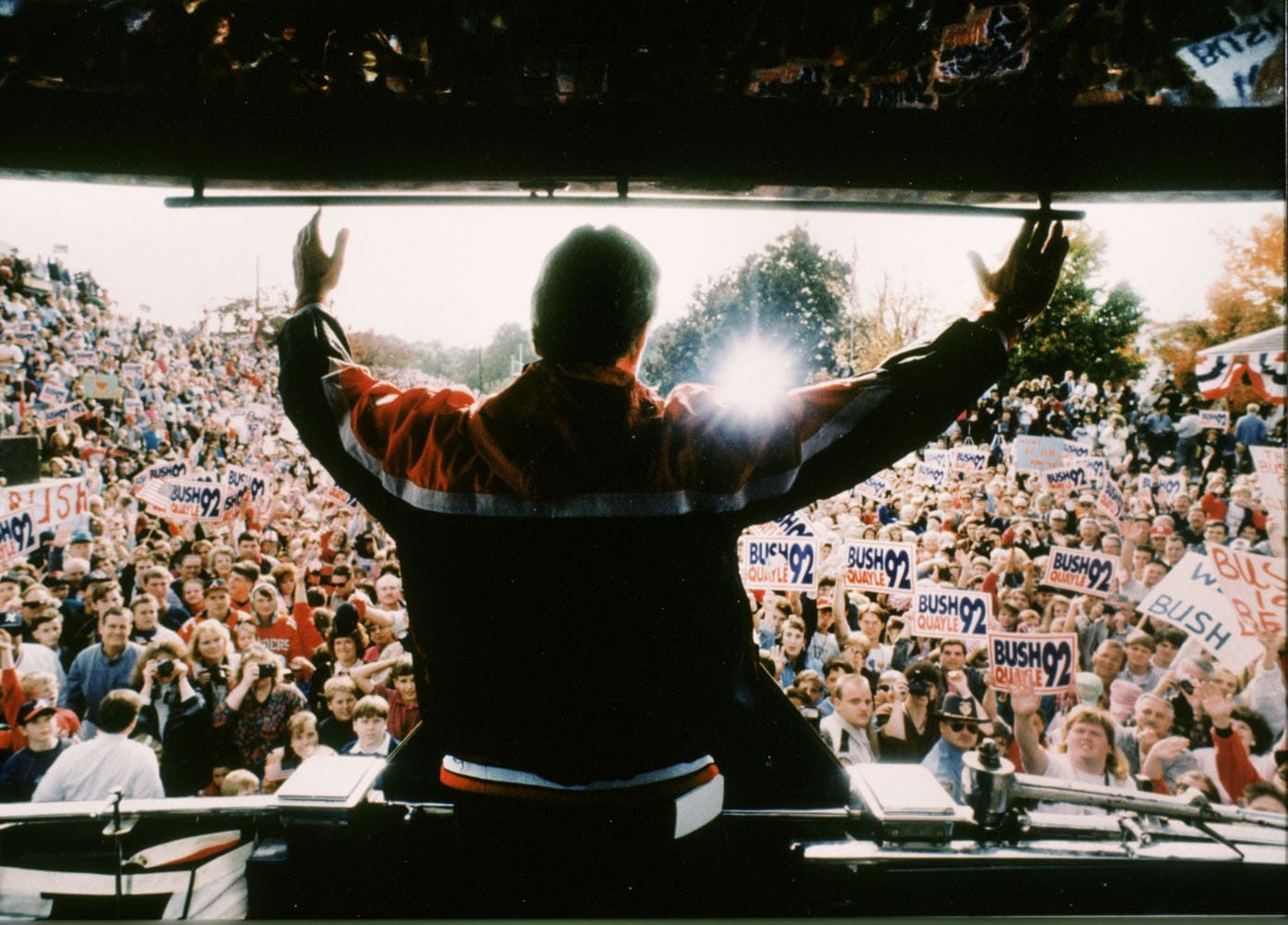
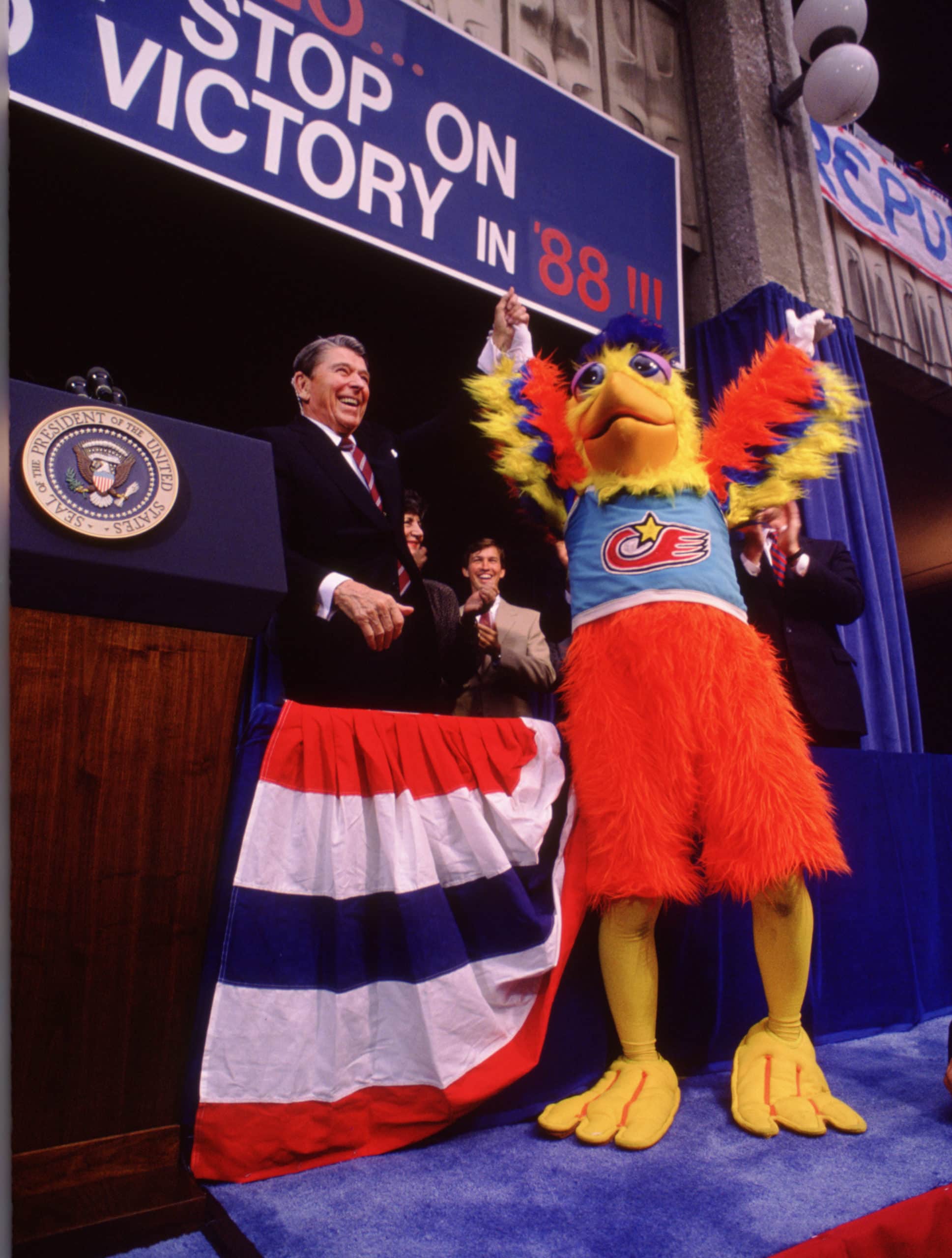
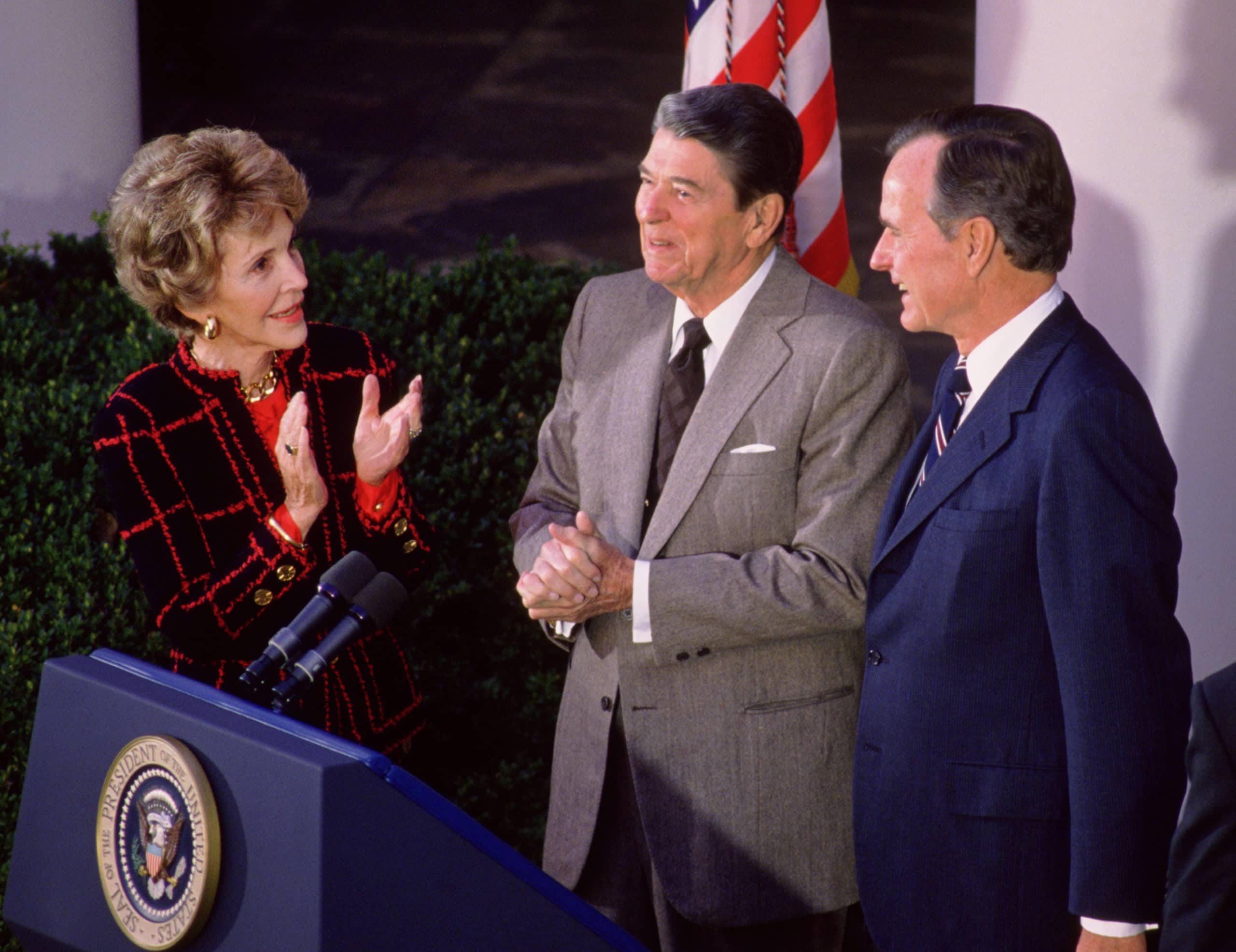
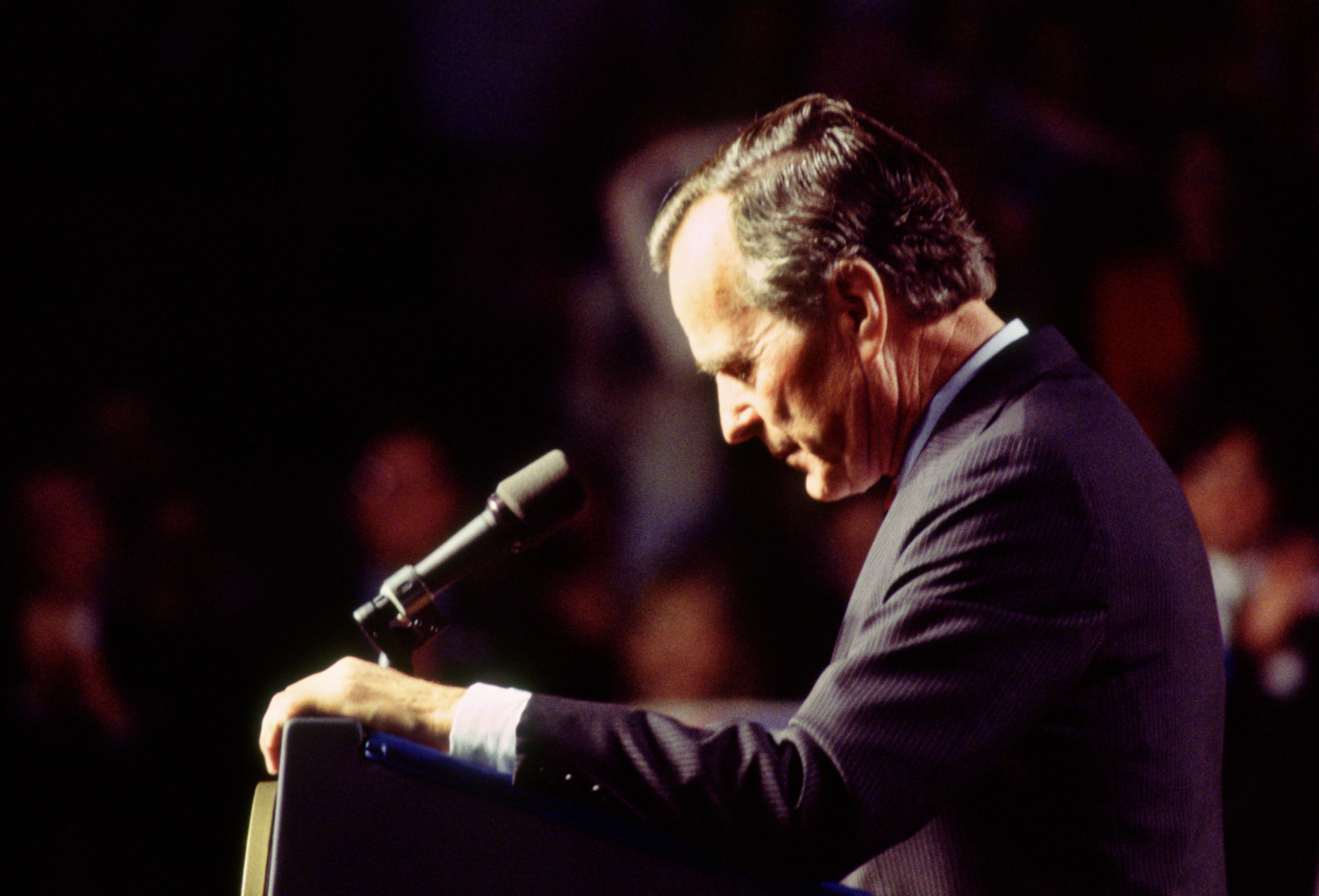
1992 President George Bush lost to the former governor of Arkansas Bill Clinton, and to make it worse, Clinton was young enough to be his son. I was with him on the final days of the campaign, and in Houston at the Westin Galleria when he conceded. It was a grim moment for the old warrior. President Bush's 37.5% was the lowest percentage total for a sitting president seeking re-election since William Howard Taft in 1912 who only got 23%. Clinton took the Electoral College 370-168.
1996 I got off on the wrong foot with Sen. Bob Dole who was running against the incumbent President Bill Clinton. I was shooting the campaign for Newsweek, and my first cover for them was a stark black and white portrait of Dole with the headline, “Doubts About Dole.” My name was also prominently displayed next to the photo, so there was no way he didn’t know who took it!
After it hit the newsstands I saw Dole for the first time in the lobby of the Holiday Inn in Manchester, New Hampshire. I was standing next to former U.N. Ambassador Jeane Kirkpatrick. Dole saw me, and made a beeline over. He didn’t look happy, and sarcastically said, “Really glad we let you spend all that time with us.” I said that I’d taken a lot of good pictures during that couple of weeks. He said, “That photo on the front of Newsweek made me look like I was dug up from the grave.” He then turned and abruptly left. Ambassador Kirkpatrick smiled sweetly and said, “well, it looks like you made a real friend there.”
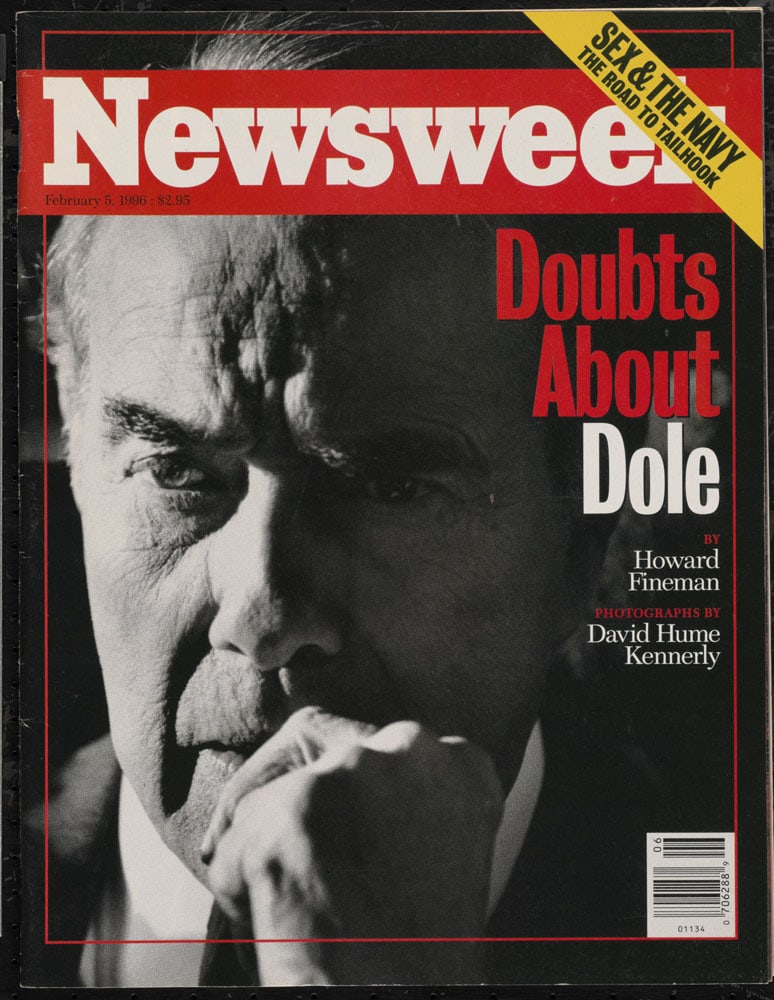
The next time I saw Senator Dole he was sitting between Texas Gov. George W. Bush and former President George Bush in Houston. During the photo op Dole pointed at me, and said “Do you know Dave Kennerly?” They did. “He took that awful picture of me on the cover of Newsweek. It cost me five points in the polls.” Guess I hadn’t gotten back in his good graces. It’s worth pointing out that the words accompanying a photo could influence people’s judgment of the person. If the headline had been something like, “Bob Dole’s Presidential Quest,” instead of “Doubts About Dole,” he and others might well have viewed it differently. My job, however, isn’t to please or skewer. Dole went on to lose by almost nine points in the popular vote to Clinton, and Independent candidate Ross Perot picked up a little over 8%. Clinton got 379 Electoral votes to Dole’s 159. Perot zero.
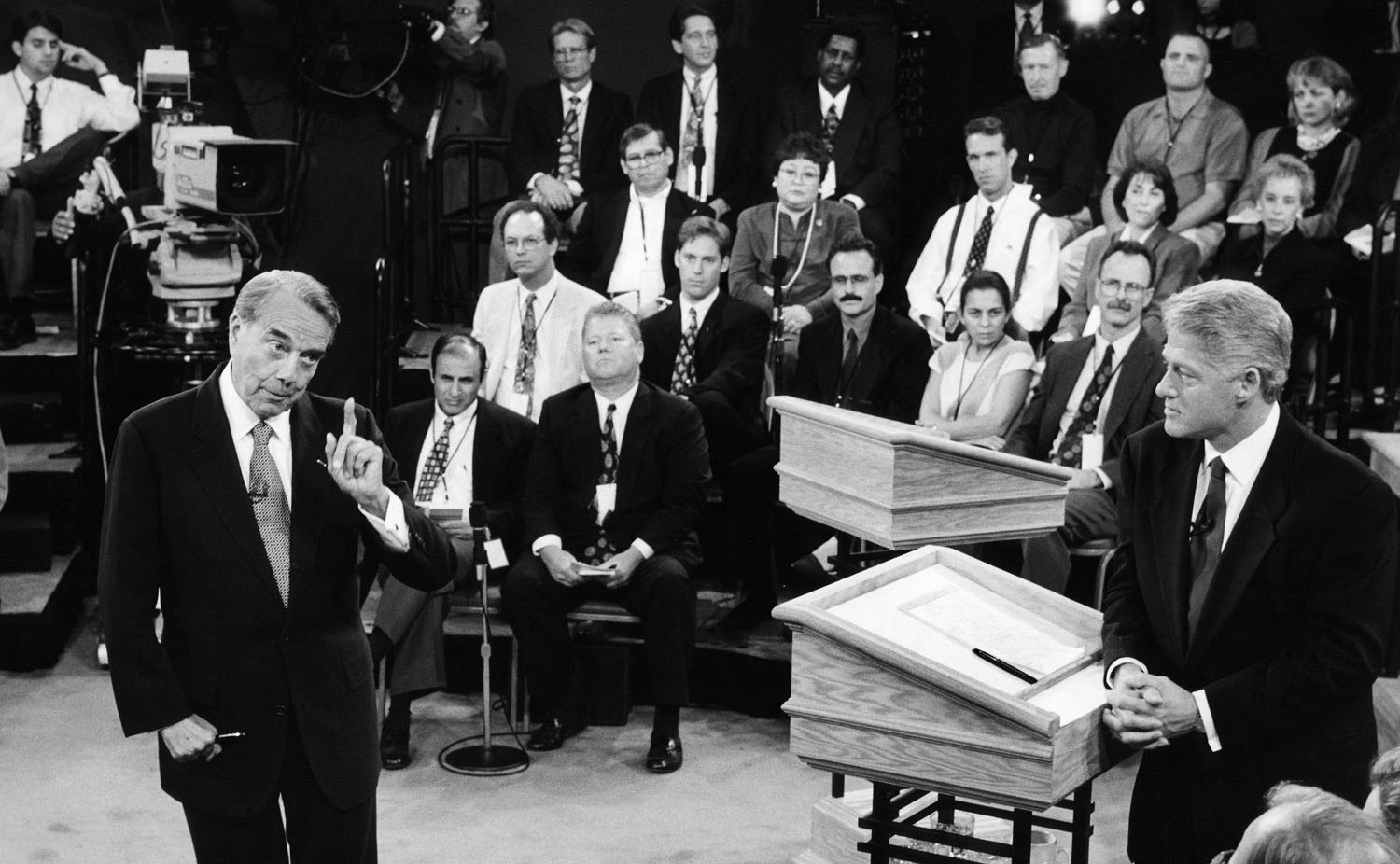
2000 Newsweek gave me my choice of candidates to cover, either Gov. George W. Bush or Sen. John McCain for the turn of the millennium election. Figuring that Bush’s campaign would be restrictive to the press, and very conventional, I chose to follow the political maverick McCain, an ornery and colorful Vietnam War hero. (Note to Donald Trump: He was a hero not for being shot down and captured, but for rejecting the North Vietnamese’s offer for an early release ahead of others who had been POW’s longer. McCain was the first to tell you that getting blown out of the sky and being taken prisoner was by no means heroic.)

My travels with McCain were a photographer’s dream. Total access to him and his advisors, a permanent seat on his campaign bus, The Straight Talk Express, and a really interesting and honorable guy to photograph on top of it. I calculated that the odds were against McCain winning the Republican nomination for president, but if he was victorious it would be a political earthquake that would shake up the establishment. He almost pulled it off, and whupped Bush in the New Hampshire Primary by 18 points. The victory was short lived, Bush & Co. napalmed McCain in South Carolina, and derailed his momentum. McCain withdrew from the race on March 9 against the backdrop of Sedona, Arizona.
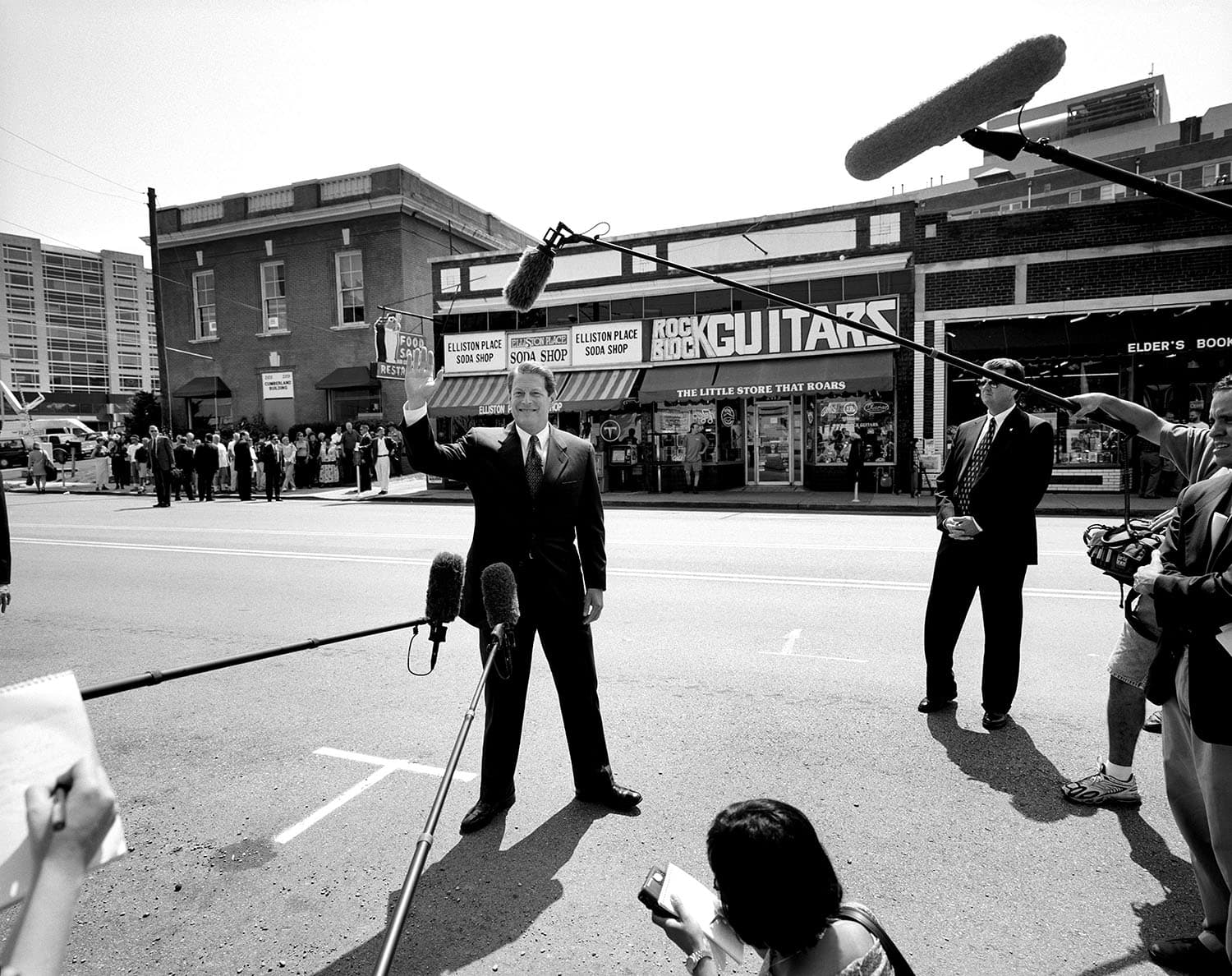
For a few weeks after McCain’s departure I covered the Democratic nominee Vice President Al Gore, and for the last couple of weeks of the campaign switched over to Bush’s running mate Dick Cheney. That move put me in the room at the governor’s mansion in Austin with his inner circle election night.
Gore had conceded to Bush before I arrived at his residence, and everyone was celebrating. Then came the shocker: Gore withdrew his concession in a private call to Bush. I heard about it firsthand before anyone else. I was in the kitchen getting a drink of water when Bush came down the back stairway from the family quarters. He had just talked to Gore and appeared shell shocked. Bush looked at me and said, “He took it back. He took it back.” I said, “Who took what back?” He said, “Gore. He took back his concession.” All I could think to say was, “Well that sucks.” He agreed. Gore took it back because Florida, the state that could put either of them over the top in the Electoral College became too close to call. That’s how the night ended.
It’s worth noting that Gov. Bush’s brother Jeb, the governor of Florida, was also in the room, making for even more drama. Ultimately the Supreme Court gave it to Bush a month later. If John McCain had been the candidate there wouldn’t have been a tie, in my estimation he would have picked up plenty of Democrat votes, and he would have beaten Gore straight up.

2004 If life had do-overs, Democratic presidential nominee John Kerry probably wouldn’t have gone windsurfing off Nantucket for the photographers. I was out on the boat when he did it, courtesy of his campaign, and was impressed with his athletic ability. At the time I wondered if it was a good idea for him, but hey, it was their call. It turned into a Dukakis-like moment. The GOP made ads featuring Kerry windsurfing and tacking back and forth in a ballet-like scene set to the Strauss waltz, “By the Beautiful Blue Danube.” The ad claimed that his positions shift, “whichever way the wind blows.” I thought it was pretty clever, but the Kerry folks, of course, branded it “tasteless.” They left out very funny. It was a close election, but Bush won 286-251 in the Electoral College, and 50.7% of the popular votes.
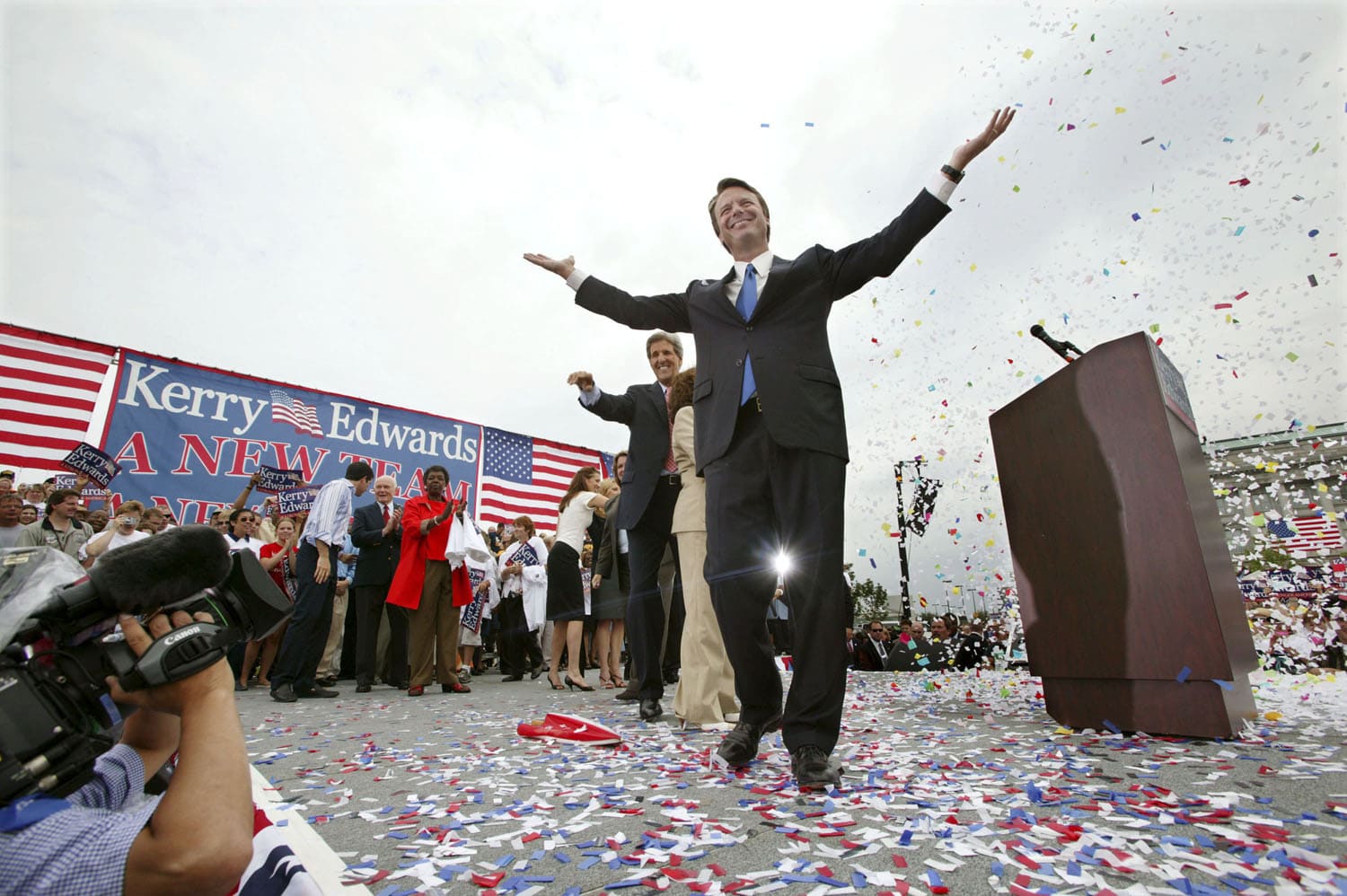
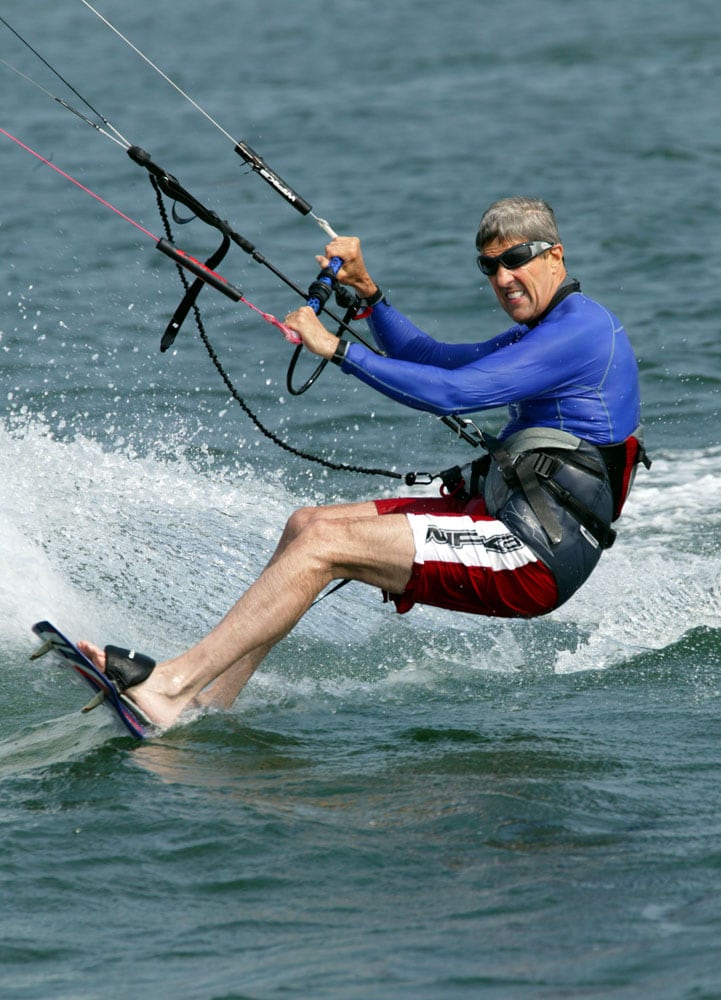
2008 John McCain was back in the saddle, and this time he got the Republican nomination. His opponent was fellow Senator Barack Obama. I spent a few days with him as he campaigned in New Hampshire. In a superstitious moment on that second New Hampshire Primary election night, McCain gathered all the same people who were there in the room eight years earlier when he kicked Bush’s ass. I was one of them. His victory in the Granite State was a moment that closely replicated his earlier triumph, even though he only edged out his competitor Mitt Romney by five points to win. In the general campaign McCain showed that he was more patriot than politician. During a town hall in Minnesota a woman said, “She couldn’t trust Obama. I have read about him . . . he’s an Arab.” McCain gently took the microphone from her, and shook his head. She said, “No?” McCain decisively told her, “No ma’am. He’s a decent family man, citizen, that I just happen to have disagreements with on fundamental issues.” He then looked up to the crowd and told them. “That’s what this campaign is all about.” Obama impressively won the election 365 to 173 in the Electoral College, and took almost 53% of the popular vote, becoming the first African-American president of the United States.
John McCain might have lost, but he left the stage with his honor firmly intact.

2012 I was with Republican presidential candidate Mitt Romney on his campaign bus in Virginia the day that he announced Rep. Paul Ryan as his running mate. Romney was in a pensive mood, and I took a good photo of him alone thinking about the upcoming campaign. I had looked up his birthday, and discovered that we were born three days apart, mine was March 9, 1947, his March 12. I told him this, but I said there was one big difference between us. “What’s that?” he said. “You’re a tribute to clean living, and I’m not,” I jokingly told him. He thought that was funny. I also discovered we liked a lot of the same kind of music, and the Kingston Trio was right at the top of both of our lists. That fact will not stir any excitement among my three sons! Romney did a bit better than McCain, but not much. The Electoral College tally was 332-206, and President Obama got 51% of the popular vote.
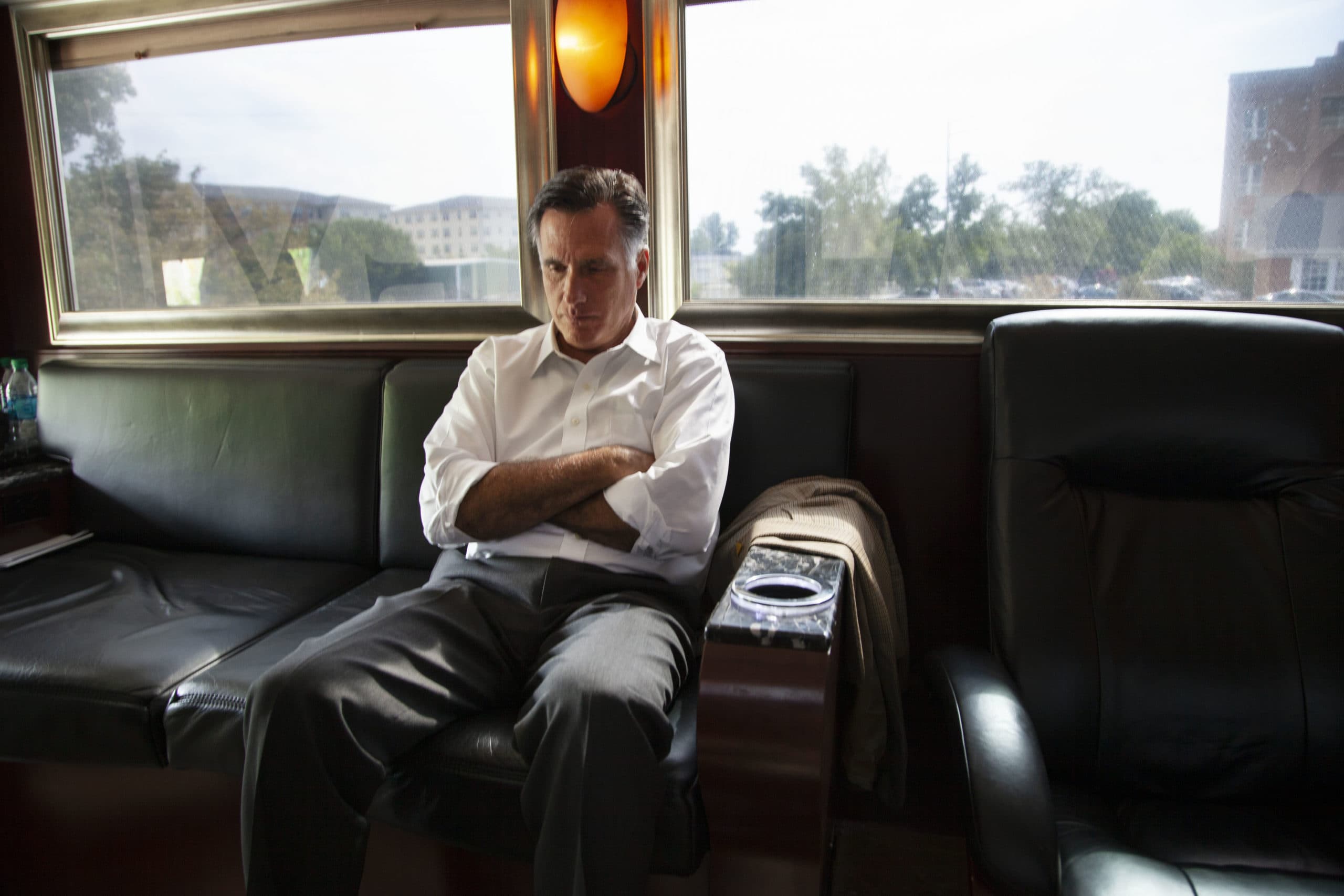
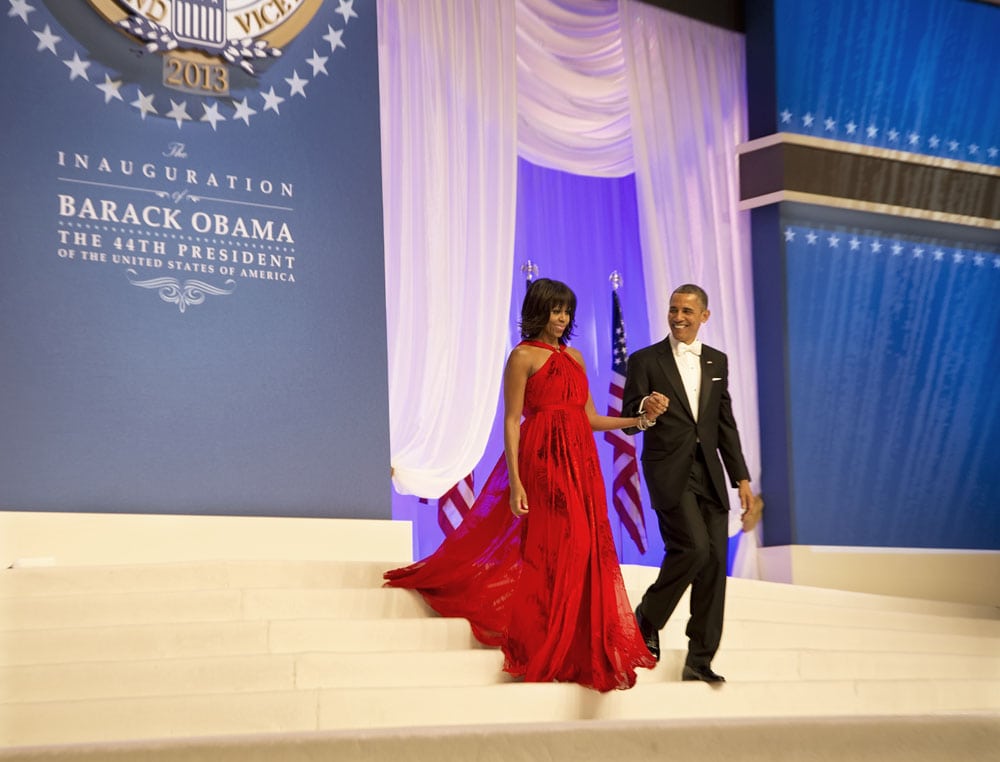
2016 This was the election that was supposed to see the first woman in America’s history elected president. I was asked by CNN to cover the campaign for them. I photographed the Republican Convention in Cleveland where Donald Trump was nominated, then drove to Philadelphia for the Democratic gathering. I decided to take some of the back roads through Pennsylvania and was shocked by how many pro Trump displays there were in formerly Democratic areas. There were Hillary Clinton posters out there also, but most of them said, “Lock Her Up!” Not an auspicious sign for HRC’s campaign.
Later in the fall I spent five days on the Clinton campaign. When I talked to her briefly at St. Anslem College in New Hampshire, she told me, “I wish the election was tomorrow.” She would have won if that had been the case, but unfortunately for her there was an October surprise four days later when FBI Director James Comey reopening an investigation into her emails. The election was eleven days away, and disaster loomed.
The last ten days of the campaign I spent covering Donald Trump, and it was clear he had a lot of support. People would wait in line for hours to get into his rallies. In the last ten days of the campaigned Trump blitzed twelve states with stops in Arizona, Florida, New Hampshire, Pennsylvania, Colorado, Nevada, North Carolina, Virginia, Michigan, Iowa, Minnesota, and Wisconsin. The campaign ended in New York City for both campaigns, the Clintons at the huge Javits Convention Center, and Trump’s in the much smaller Hilton Hotel ballroom.
Trump appeared with his family after being declared the winner. It was unlike any victory celebration I have ever witnessed. The president-elect barely broke a smile, and if you had been watching television with the sound off, you would have thought he was the one who lost. He hadn’t. Just down the street at the Javits Center, Hillary Clinton didn’t make an appearance. Her political career was finished.
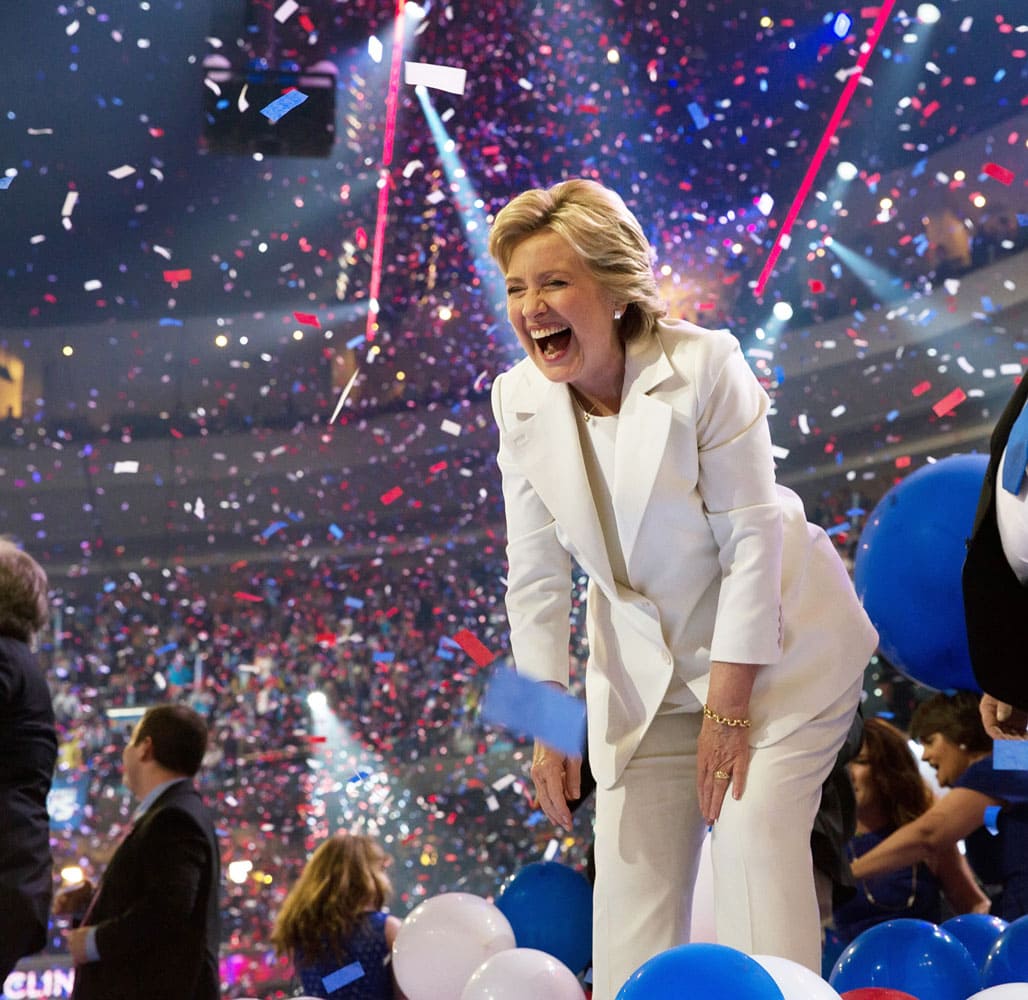
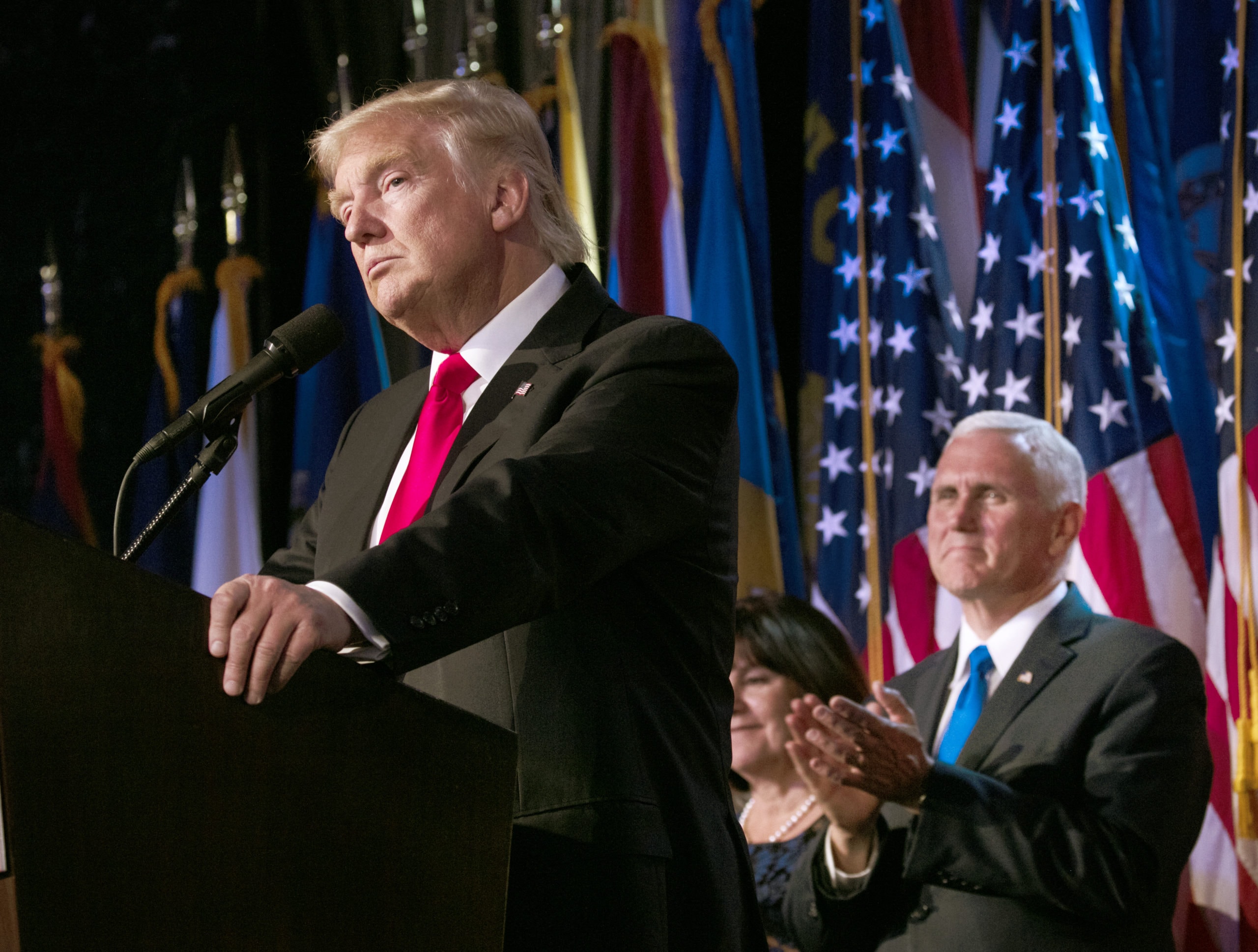
2020 This election year has become the Covid-19 campaign. I was supposed to cover this one for CNN also, but everything changed after the coronavirus hit. Before everything got turned upside-down, I was able to photograph the New Hampshire Primary, my favorite political event of every four-year campaign cycle.
I attended a Trump rally in Manchester that was a carbon copy of the 2016 campaign, and still featured Trump haranguing the press. This time he added “fake news” to the dialogue not elevating his rhetoric in four years. The best photo was a “Daddy Dearest” moment of him kissing Ivanka in front of the crowd. The teleprompter bisects the two, but you get the point.
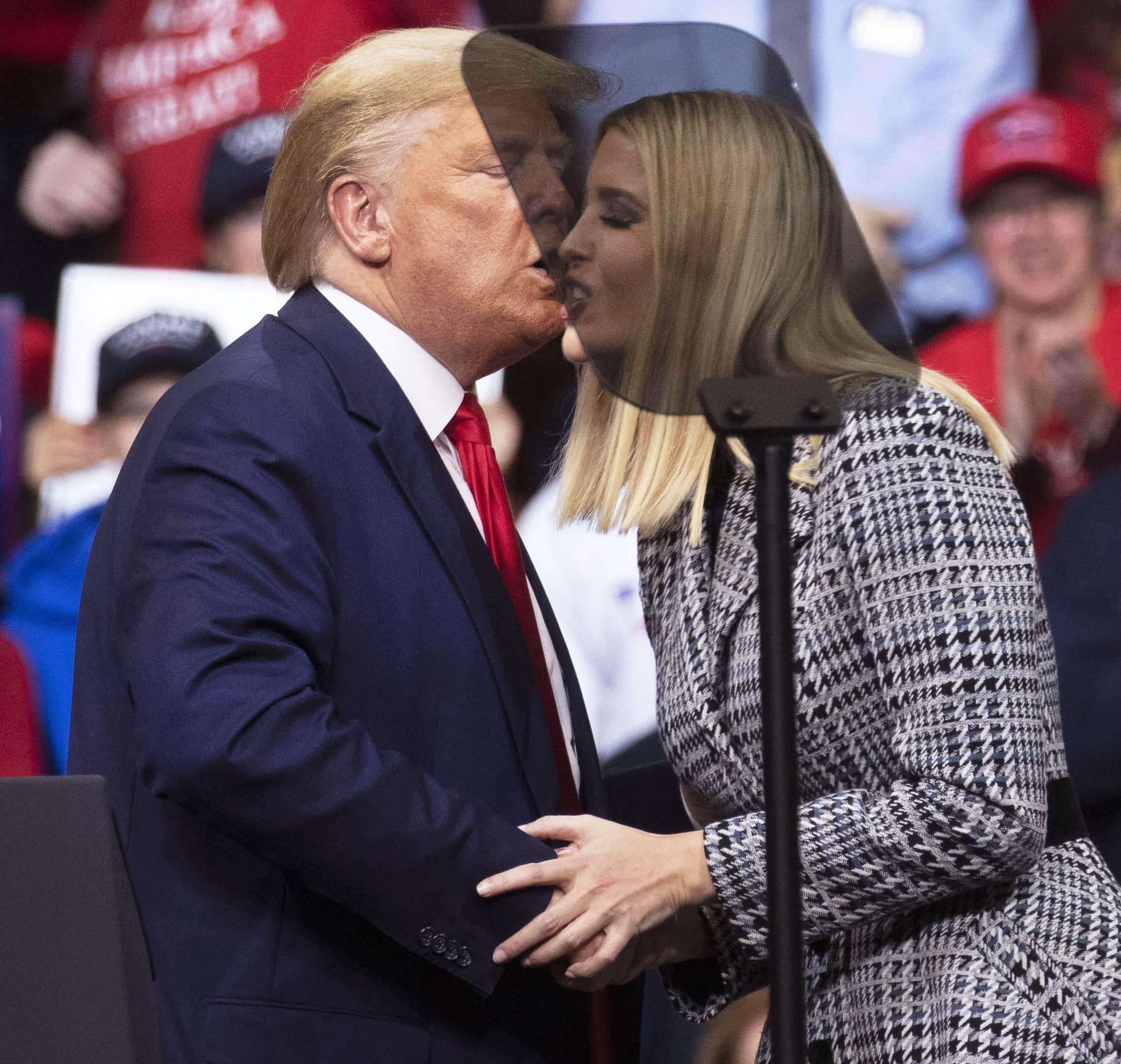
I was most impressed by my stop at a Joe Biden town hall meeting in Hampton Beach. It was a small gathering, maybe a couple hundred people, but it gave me a chance to observe the former vice president at his best. There was a particularly poignant moment when he talked about his son Beau who had died of brain cancer five years earlier.
The beauty of photography is that allows you, when the circumstances are right, to see behind the façade of someone, and to capture who they really are. This was one of those instants. The pain was there, the deep feelings were evident, and it wasn’t an act. There was one other powerful moment when Biden mingled with the crowd that struck me. A woman sought him out to share her grief about the loss of a loved one. He listened, empathized, and comforted her. You feel the emotion in the photograph.

Joe Biden will be the next President of the United States. Among his additional duties, and a role that has been AWOL for the last four years, will be an additional responsibility: Consoler-in-Chief. The country needs, and will get that.

Joe Biden will be the next President of the United States. Among his additional duties, and a role that has been AWOL for the last four years, will be an additional responsibility: Consoler-in-Chief. The country needs, and will get that.
